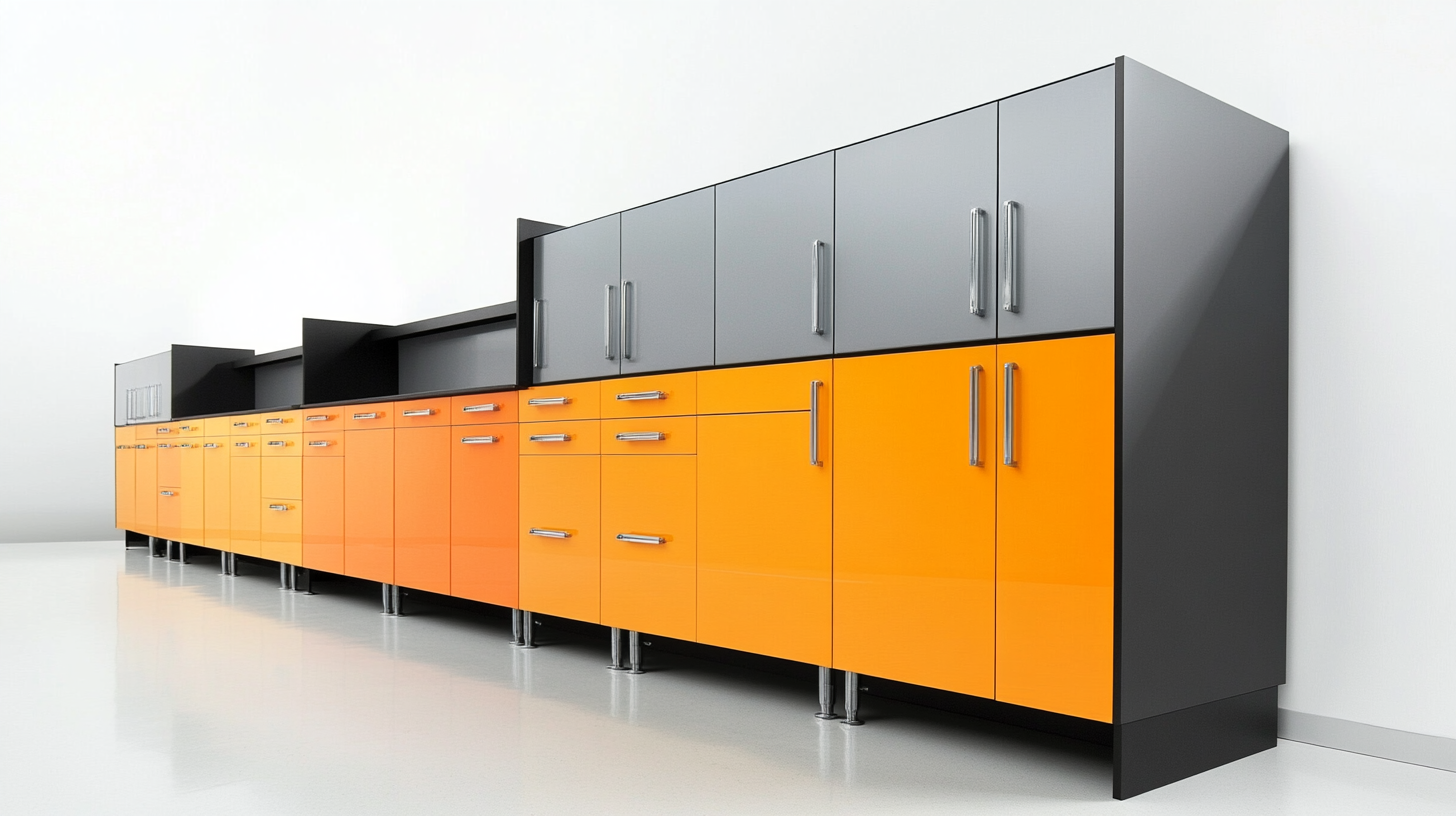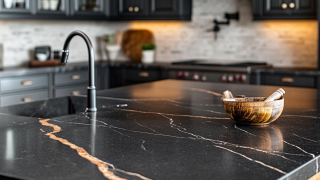Unlocking Innovation: Your Guide to Sourcing Cutting-Edge New Cabinets Globally
In today's fast-paced consumer market, the demand for stylish and functional furniture solutions has never been higher, particularly for New Cabinets. According to a report by Grand View Research, the global cabinetry market is expected to reach USD 70.71 billion by 2025, driven by the rise in home remodeling activities and increasing disposable incomes. As homeowners and designers alike seek innovative options to meet evolving aesthetic and practical needs, the quest for cutting-edge New Cabinets has become a focal point for both manufacturers and retailers.
As innovation reshapes the cabinetry landscape, sourcing cutting-edge designs and materials has become paramount. A survey by IBISWorld indicates that the cabinetry manufacturing industry is experiencing a steady growth rate of 4.5% annually, reflecting the increasing value consumers place on customizable and sustainable options. This evolution presents a unique opportunity for industry stakeholders to stay ahead of trends by exploring global sourcing channels. In this blog, we will delve into effective strategies for sourcing the latest New Cabinets, ensuring that your offerings stand out in a competitive market.

Exploring Global Markets for Innovative Cabinet Designs
The pursuit of innovation in cabinet design has never been more vibrant, and exploring global markets is key to uncovering cutting-edge creations. As designers and manufacturers push boundaries, diverse cultural influences and advanced technologies converge to shape unique cabinet solutions. European artisans blend traditional craftsmanship with modern aesthetics, while Asian manufacturers leverage precision engineering to produce sleek, functional designs. This cross-pollination of ideas not only enriches product offerings but also fosters collaborations that redefine what cabinetry can be. Attending international trade shows and exhibitions is an invaluable strategy for sourcing innovative cabinet designs. Events like the Milan Design Week and the International Contemporary Furniture Fair showcase the latest trends and innovations from around the world. These gatherings allow designers and suppliers to connect, exchange ideas, and explore new materials and technologies firsthand. By immersing themselves in these vibrant environments, businesses can identify emerging styles and gain insights into consumer preferences across different markets. Furthermore, leveraging online platforms and global marketplaces can significantly enhance the search for innovative cabinetry. Websites that specialize in design or manufacturing enable businesses to browse a plethora of options without geographical constraints. This digital approach not only broadens the scope of available designs but also facilitates direct communication with manufacturers, allowing for customizations that align with specific project needs. As global markets continue to evolve, staying informed and adaptable will be crucial for any entity aiming to lead the charge in innovative cabinet solutions.

Key Trends in Cutting-Edge Cabinet Styles and Materials
When it comes to modern interiors, the emphasis on innovative cabinet styles and materials is becoming increasingly important. Recent reports from the Furniture Today Annual Review indicate that the global cabinetry market is projected to reach USD 101.46 billion by 2027, growing at a CAGR of 4.5%. This growth is driven by evolving consumer preferences, pushing manufacturers to explore new materials that offer both aesthetic appeal and functionality.
Sustainable materials are a key trend in the cabinetry sector. According to a survey by the Kitchen & Bath Industry Show, 80% of industry professionals anticipate that eco-friendly cabinetry will dominate the market in the coming years. This includes materials such as bamboo, reclaimed wood, and low-VOC (volatile organic compound) finishes. Not only do these materials cater to the rising demand for environmentally responsible products, but they also enhance the durability and longevity of kitchen spaces.
Moreover, contemporary cabinet designs are increasingly reflecting minimalist aesthetics, characterized by clean lines and a lack of ornate details. The National Kitchen and Bath Association highlighted that 61% of homeowners prefer a sleek, modern look. This has led to a rise in the use of matte finishes, handleless designs, and specialized storage solutions that maximize space efficiency. Innovations such as smart cabinetry with integrated technology further complement this trend, offering seamless integration of lifestyle needs within functional design.
As the demand for stylish, sustainable, and functional cabinets continues to rise, manufacturers are compelled to stay ahead of trends and embrace cutting-edge materials. It's an exciting time for the cabinetry industry, promising endless possibilities for both creators and consumers alike.

Building Relationships with International Cabinet Makers
Building relationships with international cabinet makers is essential in today’s global market, where innovation thrives on diverse ideas and craftsmanship. As industries face challenges such as tariffs and shifting trade policies, establishing strong ties with makers around the world can lead to unique sourcing opportunities. The impact of tariffs on imports, particularly in sectors like aluminum and steel, heightens the need for businesses to seek alternative materials and collaborators, making wood and other sustainable materials increasingly attractive.
At design exhibitions such as the recent Design & Construction Week in Las Vegas, which attracted over 200,000 visitors, the importance of international cooperation becomes evident. Here, cabinet makers from different regions showcase their work, blending traditional techniques with modern aesthetics. This melting pot of creative talent allows businesses to discover innovative designs that resonate with varied customer preferences, bridging cultural differences through the universal language of craftsmanship.
Furthermore, the rise of avant-garde furniture makers highlights the blurred line between art and utility in modern design. Engaging with these creators not only opens doors to groundbreaking cabinet styles but also fosters a network of artisans who share a vision for pushing the boundaries of interior spaces. By cultivating these relationships, businesses can stay ahead in a competitive market, harnessing the best of global talent to offer unique cabinetry solutions that inspire and delight consumers.

Sustainable Practices in the Global Cabinet Industry
The global cabinet industry is increasingly focusing on sustainable practices, addressing both environmental concerns and consumer demand for eco-friendly products. According to a report by Grand View Research, the green building materials market, which includes sustainable cabinets, is expected to reach $808.99 billion by 2027, growing at a compound annual growth rate (CAGR) of 11.6% from 2020 to 2027. This growth underscores a significant shift towards sustainability in residential and commercial construction.
In the cabinet manufacturing sector, companies are adopting sustainable sourcing strategies, including the use of reclaimed wood, low-VOC finishes, and responsibly sourced materials. A study published by the Forest Stewardship Council (FSC) highlights that furniture made from FSC-certified wood can help reduce deforestation and encourage responsible forestry practices, which are vital in preserving biodiversity. As consumers become more environmentally conscious, those using sustainable practices often see increased brand loyalty and market share.
Moreover, innovative manufacturing techniques such as digital fabrication and modular designs are emerging in the cabinet industry. These methods not only enhance efficiency and reduce waste but also support sustainable development goals. For instance, adopting lean manufacturing processes can lead to a decrease in material waste by up to 30%, according to data from the Lean Construction Institute. The industry's commitment to integrating sustainability into its core operations is essential for fostering innovation and meeting the evolving needs of the global market.
Tips for Navigating Import Regulations and Trade Challenges
When sourcing cutting-edge cabinets globally, understanding import regulations and trade challenges is crucial for ensuring smooth transactions and compliance. The current geopolitical landscape, highlighted by evolving India-Türkiye relations, underscores the importance of economic collaboration and adaptability. As both nations explore new trade opportunities, businesses must be aware of specific regulations and tariffs that could impact their operations. According to the World Economic Forum, the integration of AI in trade offers promising benefits but requires ongoing policy adaptation to navigate these complexities effectively.
Trade policies are in flux, particularly in light of recent tariff changes initiated by the US, which have reshaped the global trade landscape. Asia now stands at the forefront of this transformation, poised to redefine globalization. For instance, Vietnam's e-commerce sector is projected to significantly develop by 2025, with the country's E-Business Index indicating potential growth fueled by a decrease in trade barriers. Companies venturing into this market need to stay informed about local regulations and potential tariff implications to mitigate risks effectively.
Moreover, as countries, including Canada, offer resources to support exporters facing unexpected tariffs, businesses must adopt proactive strategies. This includes strengthening their supply chains and understanding tariff landscapes to protect against disruption. Embracing this proactive stance will not only help businesses navigate current trade dynamics but also position them favorably for future opportunities in international markets.


Fall into Function: How LaFata Cabinets Prepares Your Kitchen for the Cozy Season


Back-to-School Kitchen Refresh: How LaFata Cabinets Can Help You Stay Organized This Fall



